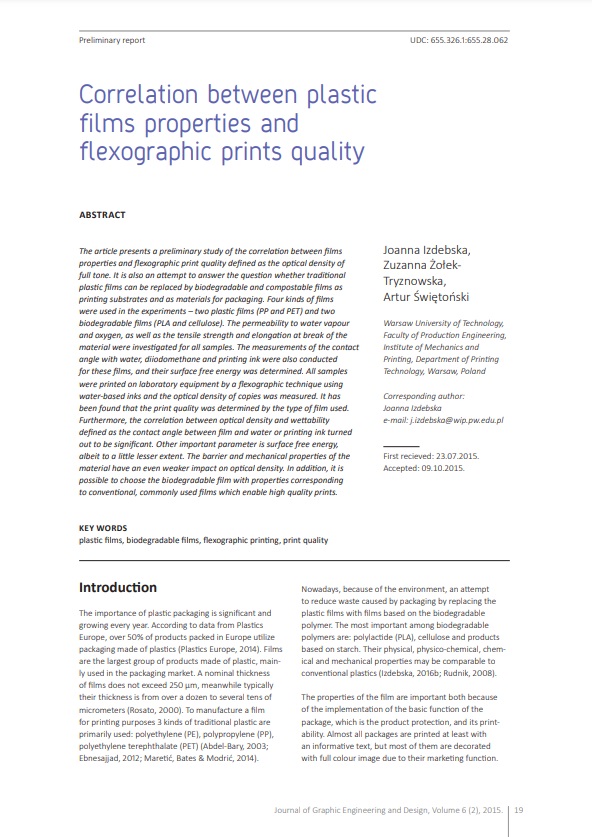Correlation between plastic films properties and flexographic prints quality

Published 2023-09-30
abstract views: 104 // Full text article (PDF): 94
Keywords
- plastic films,
- biodegradable films,
- flexographic printing,
- print quality
How to Cite
Copyright (c) 2015 © 2015 Authors. Published by the University of Novi Sad, Faculty of Technical Sciences, Department of Graphic Engineering and Design. This article is an open access article distributed under the terms and conditions of the Creative Commons Attribution license 3.0 Serbia.

This work is licensed under a Creative Commons Attribution 3.0 Unported License.
Abstract
-
The article presents a preliminary study of the correlation between films properties and flexographic print quality defined as the optical density of full tone. It is also an attempt to answer the question whether traditional plastic films can be replaced by biodegradable and compostable films as printing substrates and as materials for packaging. Four kinds of films were used in the experiments – two plastic films (PP and PET) and two biodegradable films (PLA and cellulose). The permeability to water vapour and oxygen, as well as the tensile strength and elongation at break of the material were investigated for all samples. The measurements of the contact angle with water, diiodomethane and printing ink were also conducted for these films, and their surface free energy was determined. All samples were printed on laboratory equipment by a flexographic technique using water-based inks and the optical density of copies was measured. It has been found that the print quality was determined by the type of film used. Furthermore, the correlation between optical density and wettability defined as the contact angle between film and water or printing ink turned out to be significant. Other important parameter is surface free energy, albeit to a little lesser extent. The barrier and mechanical properties of the material have an even weaker impact on optical density. In addition, it is possible to choose the biodegradable film with properties corresponding to conventional, commonly used films which enable high quality prints.

